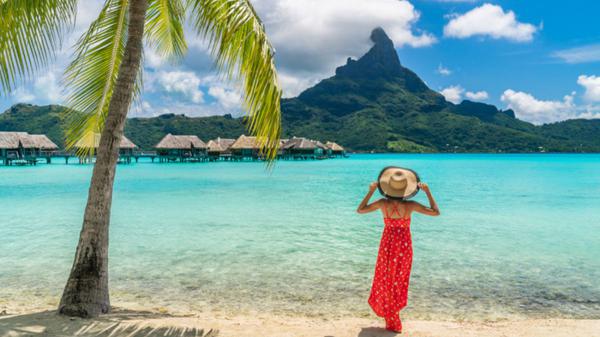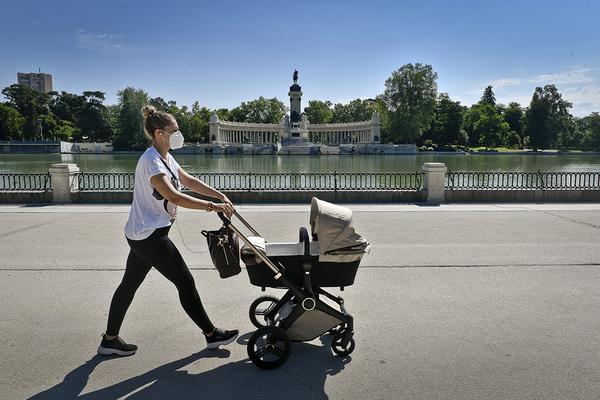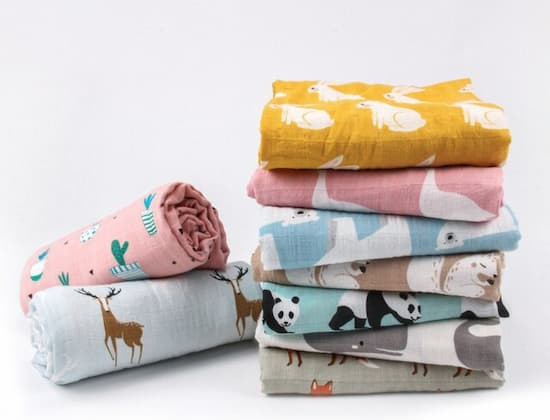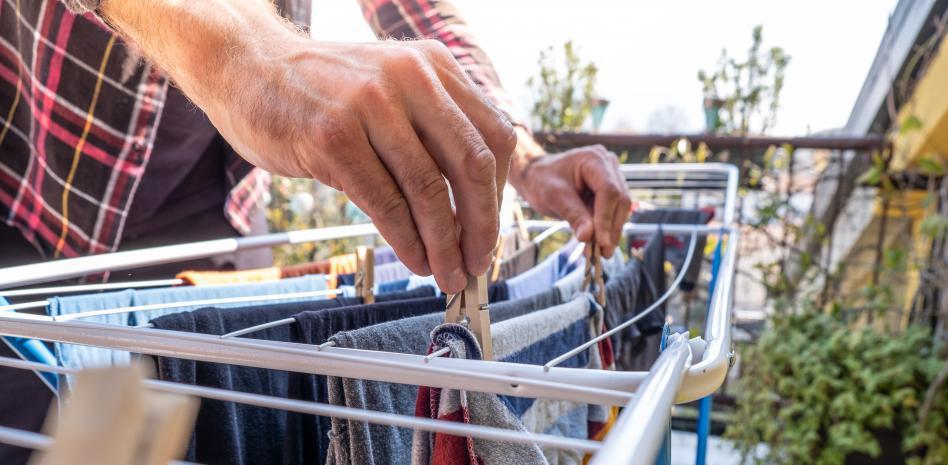Miss Universe 2021 Nation: the most extravagant typical costumes, what did they mean?
Mainumby, the typical costume of Paraguayan Nadia Ferreira was inspired by a Guarani legend, associated with sustainable fashion and social reintegration. All this was known with the explanation of her team of designers, after the young woman from Guaireña captivated with a powerful attitude on the catwalk last Friday. This Sunday the final gala of Miss Universe is celebrated.
The sample of typical costume lasted almost two hours for the vast majority of the 80 candidates to present their allegorical clothing. Some costumes seemed so minimalist, bordering on unimaginative; others signed up for the carnival dance, and there were even a couple that emulated rather advertising posters. But there were also social messages.
Read more: Mainumby: a suit with attitude from Nadia, a Guarani legend and sustainable fashion
Several of the protagonists were in charge of explaining the meaning of their costumes. Among the main themes was the urgency of caring for the environment, and several of these designs were made from recycled materials. The typical costume competition has a popular vote on the official page of Miss Universe.
The day was opened by Ina Dajci (Albania) with a concise tribute to the culture of her country. The second candidate on stage was Julieta García (Argentina), who explained: "She represents our glaciers in Argentina trying to simulate their melting, let's take care of our movements, the Earth is not ours, we only inhabit it, and if we don't If we unite to evolve and become aware of global warming, things are going to get very ugly”.
Bahrain debut
From the Persian Gulf, Bahrain is participating for the first time in an edition of Miss Universe, and is represented by a 25-year-old fashion student, Manar Nadeem Deyani, who wore an allegorical dress made of natural pearls, a product that characterizes her country. , covering 30 islands.
In her turn, Nane Avetisyan (Armenia) passed with a tribute to Arubani, goddess of love, arts and crafts of Ararat. From Aruba, Thessaly Zimmerman appeared holding a canvas with the image of aloe farmers, since it comes from the so-called "island of aloes". Similarly, Daria Varlamova (Australia) celebrated Mother Nature. Then, wearing a winged suit, Kedist Deltour (Belgium) showed the colors of two nations: born in Ethiopia, she was adopted by a Belgian family.
Miss Congeniality
Last Friday, two official Miss Universe awards were presented. One went to the Chilean candidate, and the first to Chantel O'Brian (Bahamas), who received the Spirit of Carnival award, which is also identified as the Miss Congeniality award.
The award is sponsored by Carnival Cruise Line and is presented to the delegate who embodies the company's values of "fun, friendship, diversity and inclusion." Company President Christine Duffy said, "Chantel has a passion for early childhood education and mentorship that led her to co-found The Leading Ladies Project, an organization that prioritizes the education of disadvantaged girls."
Tree and burlap dresses
The "Guardian of the Chiquitanía" was named after the costume of Nahemi Uequin Antelo (Bolivia), whose meaning was explained in the Gloria Promotions networks as a call to conscience to put a stop to the burning and deforestation of the country and of Latin America. ; when representing the fire of 2020, with the loss of 25,000 hectares in the Otuquis park.
Meanwhile, Teresa Santos (Brazil) appeared with an enigmatic red jumpsuit and foliage hands. She literally dressed as a tree. The Brazilian represented the Pau-Brasil (Paubrasilia echinata), a tree native to Brazil whose wood has a reddish-brown color. "The look is a paradox between the Modernist Manifesto and the warning of the predatory action of man against nature," she explained.
Meanwhile, Xaria Penn (British Virgin Islands) did the same in a burlap dress that paid homage to the “saffron bag” used to transport goods and produce to and from plantations and markets throughout the Caribbean.
The Cambodia accident
Wardrobe mishaps and mistakes are inevitable. Let Marady Ngin (Cambodia) say so. Everything was going perfectly with her showy and colorful costume, until she, as she practically left the stage, she suddenly dropped the back of her costume. The cameras recorded her gesture of surprise from her.
The young woman, undecided between picking up the ornament that the public on the side of the catwalk kept to help her, or leaving with the best pose of "nothing happened here", was helped by production personnel, who relocated her in front of the stage. and to place the missing part, so that Marady Ngin could complete the picture with dignity.
Some costumes represented typical flowers from her country, such as Georgina Kerford (Cayman Islands), who came out dressed as a banana orchid. While Tamara Jemuovic (Canada) opted for an almost uniform suit to pay tribute to the Royal Canadian Mounted Police.
The Chilean impact
“It is an honor to be able to show the world the work carried out by hundreds of confectioners from my country, especially the women who, in the middle of the road, offer us the delicacies of the La Ligua commune,” said Antonia Figueroa (Chile), after showing herself with a white outfit and holding a basket.
The Chilean was awarded the Impact Award. Receiving the @impactwayv award has been incredible because it recognizes the work of dozens of people who are behind all the projects I have worked on for years and, above all, it gives special value to my career as an Environmental Engineer”, she said. Figueroa.
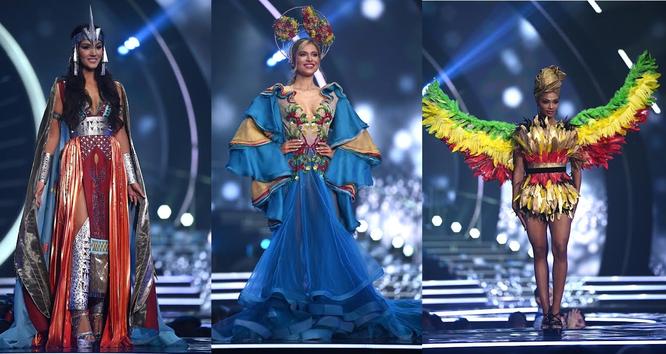
In turn, the ImpactWayv company greeted her: “Huge congratulations to @antonia_cristal for winning the Miss Universe ImpactWayv Challenge! Your impact and unwavering commitment to the environment, youth development, and so many other important causes is inspiring, and we are grateful for the difference you are making! Congratulations to all the Miss Universe delegates who have participated and for their continued commitment to social good.”
colombian butterflies
“Fly Okay, fly, fly high, that's what my mom tells me. It is her way of saying that she wants me to feel calm, free, to be myself without fear and to advance gracefully in my goals, ”said Valeria Ayos (Colombia), who held yellow folded wings from her ankles in scene.
"Last night (Friday) I understood that message even more and I experienced that feeling of joy and freedom when I wore my national costume dedicated to yellow butterflies, one of the more than 3,600 species in Colombia," she continued.
"This wonderful and perfect insect of nature that Randy Severiche designed was in reality, a dream longed for and materialized for me," she expanded. “An allegory to Gabo's yellow butterflies and the Colombian film 'Encanto'. These three art samples highlight the attributes of our beloved and diverse Colombia.” Another candidate who joined the tribute to butterflies was Valeria Rees (Costa Rica), whose blue outfit was inspired by the morpho species.
lioness heart
“As a women's rights advocate, I wanted my national costume to not only represent my country, the Czech Republic, but also what I believe in as a citizen of the country. I believe in defending and fighting for the rights of women throughout the world, especially in less developed countries, where such defense can be almost impossible when literally your life is at stake. Women's rights are simply human rights,” said Karolina Kokesova (Czech Republic).
“So, the concept of my national costume, I wanted to show what it means to have the heart of a lion, to represent the fighting spirit historically in the Czech people. Raised primarily by my single mother, it instilled in me to support other women and fight for women's rights beyond the borders of my country. My national costume will embody this concept and empower women, ”added the Czech, who explained every detail of her wardrobe.
The Queen's Guard
As Miss Canada, Sara Langtved (Denmark) also chose the uniform and the military salute. “Recycling is not difficult for this royal guard!” she wrote on her Instagram. “I proudly walked the runway in this asa costume, made by one of my closest friends.”
“We have made this costume using reused materials, recycled garments and 2 weeks of intense planning on how it could best represent Denmark, she detailed. “My national dress is a Queens Guard (Royal Life Guards). The Queen's Guard protects Danish Queen Margrethe II at Amalienborg Palace, the royal residence in Copenhagen.
sun and fertility
“Dominican Republic, a country placed in the same path as the sun, bouncing its rays of light off our beautiful crystalline beaches and landscapes towards the Universe. Inspired by the warm sun that sets on the wonderful landscape of the Baní dunes, a national treasure characterized by its high mountains of fine white sand dressed by waves of wind”, said Debbie Aflalo (Dominican Republic).
Although her costume seemed basic, she explains: "This typical costume has been made with resin moldings that meet the principles of being compostable and biodegradable, decorating a metal structure, adorning every minute detail with precious laser-cut crystals."
While Susy Sacoto Mendoza (Ecuador) jumped on stage with a spear and a hunter pose: “My typical costume that represented the wealth of Pachamama, our revered Goddess of fertility. In addition, everything was built with materials that came from the earth, fruits, seeds, jute, palms were used… Without using any element of animal origin.”
Monument of Justice Complex
Alejandra Gavidia (El Salvador) took on the challenge of crossing the runway blindfolded, since her justice wardrobe required such an accessory. “I am the monument to the Constitution! First of all let me tell you that everything in this suit has a meaning. Nothing is random. He has a lot of mind, feeling, and work,” she described.
“The dress is a representation and honors the 71 (registered) victims of femicide, all the disappeared. The candles represent the hope of relatives to find justice on behalf of their loved ones. The candles that no longer have light belong to those people who have lost hope and it rests on my shoulders to continue seeking justice for them, "she said.
Read more: I am an Entrepreneur, positioning third-party brands is the watchword
“The hands around the dress were painted by real people who have lost a family member or loved one to a crime of femicide or disappearance. The chains on the right arm represent all the social and political pressure that sometimes hinders the search for justice,” she continued.
“The dress has been mistreated, beaten, shot to represent how our Constitution and society have suffered. And, finally, the blindfold is black as a symbol of mourning, but ends in a very dark green that symbolizes hope for all. That bandage prays: not one less, not one more disappeared, ”she concluded. Curiously, Gavidia had a second pass, this time without the mask that covered his eyes.
"Let's stop deforestation"
“Let our planet live” and “Let's stop deforestation” were the two messages written in English that Essi Unkuri (Finland) displayed on her cape, and that she almost tripped walking off the catwalk. Meanwhile, Clémence Botino (France) brought an unexpected tribute by dressing up as Josephine Baker, a black vedette and activist who has just entered the French Pantheon of Heroes.
In the case of Eloisa Jo-Hannah Seifer (Germany) she took on a traditional costume and appeared holding an imperial eagle as a prop, in theory, to represent the greatness of a country that she loves, dreams of and believes in. Meanwhile, Silvia Naa Morkor Commodore (Ghana) dedicated an extensive post to describe her tribute to the green goddess and all the symbolisms we imagined for this election. From Greece, Sofia Arapogianni came up with a shield and dressed as Athena, goddess of wisdom, war and trades.
Tributes to Israel
Dania Guevara Morfin (Guatemala) showed an elaborate costume that represents a Mayan goddess and celebrates the relationship with Israel, since her country was the second to recognize the independence of the host of this edition of Miss World, which, by the way, for the first time it takes place in the Middle East.
The same situation was proposed by Juri Watanabe (Japan), who honored the 70th anniversary of the diplomatic relationship between Japan and Israel. “The costume is a celebration of the amazing Japanese harajuku fashion culture, and pays homage to Eurovision winner and Israeli pop star @nettabarzi, who honored Japanese culture in a kimono on the world stage and is a true supporter of Japanese culture. acceptance and diversity”, explained its designer. The miss carried two iconic lucky maneki-neko cats.
A dance of warrior origin in a female version, the yancunu, inspires the typical costume of Rose Meléndez (Honduras), in honor of the Garífuna culture. In turn, each color has its meaning. The skirt and the blouse are adorned with shells and pearls that show the beauty of the woman. In the case of Hungary, Jázmin Viktória Elizabeth Jakubovish came out in a gala dress and held a Hungarian flag.
pandemic nurse
Katharine Walker (Ireland) was also one of those who displayed written messages: “Fair pay for nursing”. “I am so proud of this national costume design – when I found out I would be representing Ireland at Miss Universe this year, I knew I wanted my costume to have a message,” she recounted.
“I wanted something that was personal to me, but also extremely relevant and impactful. I wanted to celebrate the work of my fellow health workers and also make a statement about the pay of nurses”, mentions the young graduate as a nurse in 2016.
Read more: Five places for domestic tourism
“I am not only representing Ireland on this stage, but every healthcare worker, the true heroes of this world, who go above and beyond to take care of others, those who work during their breaks and work overtime without extra pay, those that help the most vulnerable through their darkest days,” he says.
“It's time to pay nurses fairly. Enough is enough,” adds Katharine Walker, who has worked in pediatric and neonatal intensive care, caring for some of the sickest children in the country; and that in the coronavirus pandemic she had to be on the front line of health.
Thousands of old coins
When Noa Cochva (Israel) came out, she gave the impression of wearing a simple party dress, however, looking at the details, it is a recycled dress made from thousands of old coins, and its design evokes the scales of the fish, an auspicious symbol in the tradition of Israel.
In the case of Mexico, Debora Hallal offered inspiration in one of the oldest cultures in her country: the Aztec culture. "Three months of work by @teban_ortiz making this incredible suit with more than 1 million embedded crystals highlighting the emblematic Aztec calendar," she described.
Meanwhile, Kawtar Benhalima Benjelloun represented Morocco, a country that has participated in Miss Universe again since 1978. The 22-year-old candidate replaces Fatima-Zahra Khayat, who suffered an accident and therefore withdrew from participating.
Maltese Parade
“Malta's national costume for Miss Universe represents traditional festivals with a hand-painted 'pavaljun' used to decorate the streets. It shows landscapes of churches and fireworks that make Maltese parties a tourist attraction”, commented Jade Cini (Malta), who literally carried a parade on her shoulders, with three pictures of the history of the country from her.
The end of the Great Siege and the Ottoman Empire in 1565, the end of the reign of the French Empire in 1800, and the fascists surrendering the Second World War in 1943, are those three moments that the miss represented, and that she surprised with an explosion of paper chopped, which forced a pause to clean the catwalk, while the drivers put together a war of fans.
With a firewood on her head, Sujita Basnet (Nepal) presented another tribute to Mother Nature, incorporating ethnic symbolism. On his part, Allison Wassmer (Nicaragua) displayed: “a tribute to the creator of ceramics Gregorio Bracamonte, originally from San Juan de Oriente who dedicated his life to rescuing pre-Columbian designs carved in clay. Reflecting the work that Nicaraguans do with their hands, forming part of our cultural heritage”.
Tribute to the Panamanian bus
"The design simulates being like the most representative public transportation in Panama, which bears the same name," said Brenda Smith (Panama) about her "Red Devil." As it is, she disguised herself as a colorful bus, which until a couple of years ago was used as public transport in Panama City; and on the back it included a portrait of Justine Pasek, the first Panamanian Miss Universe in 2002.
“I was born at the foot of a volcano. Representing the strength and courage of Peruvian women. I am the White Queen of the Andes in honor of my flag and my White City of Arequipa, bringing a message of unity and peace to the world,” said Yely Rivera (Peru), whose luminous dress shone even brighter when the production lowered the light intensity of the room. Michelle Marie Colón (Puerto Rico) paid her tribute “to Afro-descendants and to the Puerto Rican bomb, made from recycled material”.
The dove of peace and Gaudí
In her presentation, Latela Mswane (South Africa) took advantage of her ballet dancer facet to dance on tiptoe as “The Dove of Peace”. She explained: “I represented my beautiful South Africa, the culture and its spirit of Ubuntu. A nation that has shown that lasting peace can be achieved. I was honored to bring this message of hope to the world stage.”
"I was dressed in a white bodysuit with subtle patterned feathers to serve as a base for plumed arms covered in white pheasant feathers to transform into a dove of peace," she added, with mentions of her designer.
For her typical costume, Sara Loinaz (Spain) paid tribute to Gaudí, one of the most representative modernist artists in the world, and whose death is celebrated on the 95th anniversary this 2021. Her costume is titled “Trencadís” which is the name of the modernist technique that Gaudí himself invented in his works of architecture and that has been carried out by the Canarian designer Josué Quevedo. Meanwhile, Anchilee Scott-Kemmis (Thailand) showed her fists to evoke "Muay Thai", a traditional martial art.
An Emmy Trophy
Miss Elle Smith (United States) surprised with probably one of the least glamorous costumes. She dressed up as an Emmy trophy. The American team was looking to greet Hollywood, and it occurred to them that the female version of the Oscar statuette would be the one for the Emmys, which awards American television. "This costume tells all young women who have dreams and desires that they can walk the rug they want because they are fierce and brave," they explained from the Miss USA profile.
Lastly, of the Latin representatives, Luiseth Materan (Venezuela) dressed as Cattleya Amazónica, “an impressive dress inspired by the Venezuelan national flower, the orchid, which represents elegance and femininity. Our queen Luiseth was proud to present her #Typical Costume as a symbol of the magic, beauty and uniqueness of Venezuela”.
Surprisingly, in this 70th edition, Uruguay is absent. As well as Barbados, Belize, Malaysia, Indonesia and Myanmar. Most of these nations justified their withdrawal due to the increase in cases of COVID-19 in the country and travel restrictions.

